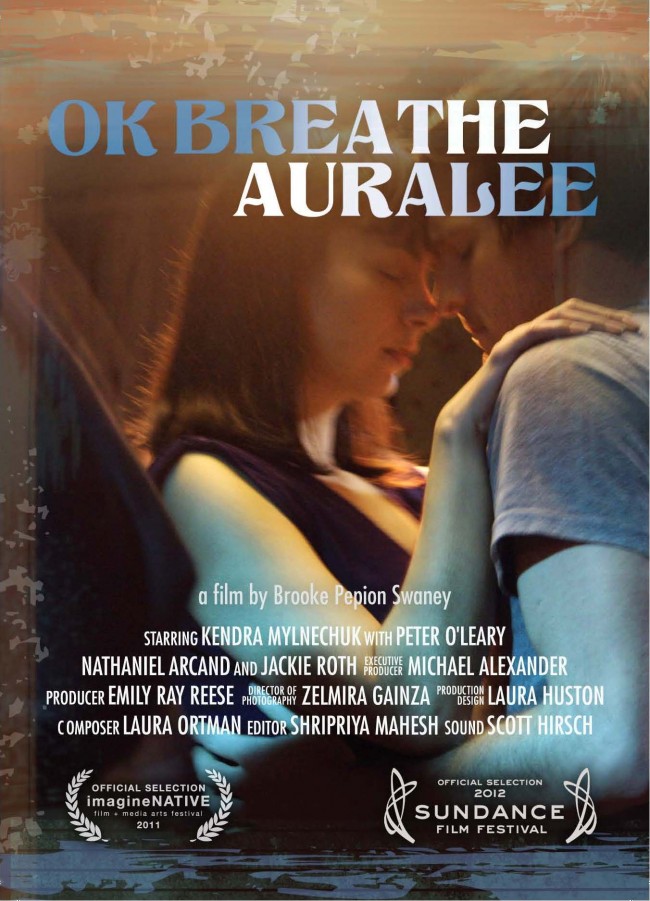Crazy Glue
A short film.
An NYU Thesis.
Director: Elizabeth Orne.
Sundance interview
In January, I was in Park City – my first time at Sundance. Being there with a film I edited was a great experience.
Brooke did all the right things – she treated her team well, she was very inclusive and she did a great job with the PR for her film, OK Breathe Auralee.
As part of that, I got interviewed. And here it is ((I had lost my voice because I was sick. One day earlier I was squeaking)).
OK Breathe Auralee
OK Breathe Auralee is Brooke Swaney’s NYU Thesis film. Brooke and I met through our writing professor Mick Casale who put us in touch when Brooke was looking for an editor.
My editing experiences with directors have spanned the spectrum. Fortunately this one was all the way on the fun and interesting end of the scale.
Laid out to tape yesterday. Sent it off today. Sundance!
Le Voyage dans la Lune
Air: Moon Rock on Nowness.com.
French ambient electronica band Air impart a cosmic touch to the newly restored color edition of George Méliès’ iconic 1902 film Le Voyage dans la Lune (A Trip to the Moon). Technically innovative at the time, Méliès’ masterpiece pioneered the use of trompe l’oeil objects, papier-mâché props and double-exposure to tell the first science fiction tale in cinema.
When you look at Méliès’ work, there is so much joy despite the incredible effort involved. The best parts of Scorsese’s Hugo had to with Méliès – a salute to a pioneer.
IFC Spec Commercial
I love this spec commercial for IFC, directed by the amazing Kirsten Tan. It was made as part of the 3rd year Commercial Collaboration class.
WHEAT
This is such a beautiful video.
Diary (2010)
This short, by the late Tim Hetherington, is brilliant (but also disturbing and depressing). The transitions and the editing are exquisite.
Lytro has changed the game
 From Ben Horowitz’s blog:
From Ben Horowitz’s blog:
People often refer to taking a picture as capturing the moment, but conventional photography does not really capture the moment. It captures one angle, one set of light, and one focus of the moment. If you are a professional photographer, you might capture the best parts of the moment. If you are someone like me, you most certainly will not. With Ren’s light field camera, you actually capture the moment or at least all of the light that visually represents the moment.
Once you have captured the moment, you can go back at any time and get the picture that you want. Specifically, after you take the picture, you can refocus, re light, and re-orient the shot.
Essentially, you can take the picture you wish you would have taken after the fact. If you are used to the old paradigm, it’s like travelling backwards through time. You can take a picture then figure out what you really wanted then go back through time and take that picture. And oh by the way, you can view the pictures in 3D. Way.
You may be thinking that this is all good and fine, but is there really a market for a magic camera? It turns out that the three biggest frustrations with conventional plane-of-light cameras are:
- They are too slow—It turns out that auto focusing takes a fair amount of time. How many times have you tried to capture a moment only to have the moment disappear while you were waiting for your camera to focus?
- The pictures aren’t bright enough—Somehow, you didn’t actually capture enough light on the plane to get the shot you wanted.
- They are too complicated—Current cameras provide lots of buttons and knobs to overcome the one plane limitation, but the result is a super complicated device.
With Lytro’s light field camera, you take pictures instantly. No need to focus, because you can do that later. The camera uses all of the available light in the scene, so you can take photos in very low light environments even without flash. With no buttons for special focus, the Lytro camera is dead simple.
This is just amazing. And if you want to be really amazed, check out their site and specifically the picture gallery.
I wonder if you can do this for moving images. Talk about ratcheting down production times and ratcheting up post-production!
In That Moment in Palm Springs Int’l ShortFest
The 2011 Palm Springs International ShortFest just announced their lineup and I’m excited that In That Moment is an Official Selection.
The film will screen on Sunday, June 26th at 2:30PM, as part of the Unexpected Connections set of short films.
If you’d like to hear more about the films we are working on and the festivals they get into, see the posters, the behind the scene pictures and other fun stuff, join Tatvam’s Facebook page for regular updates.


